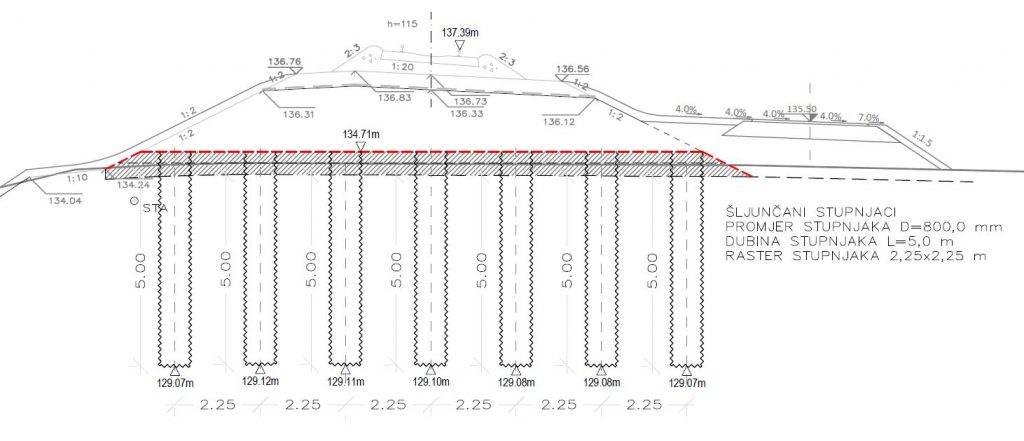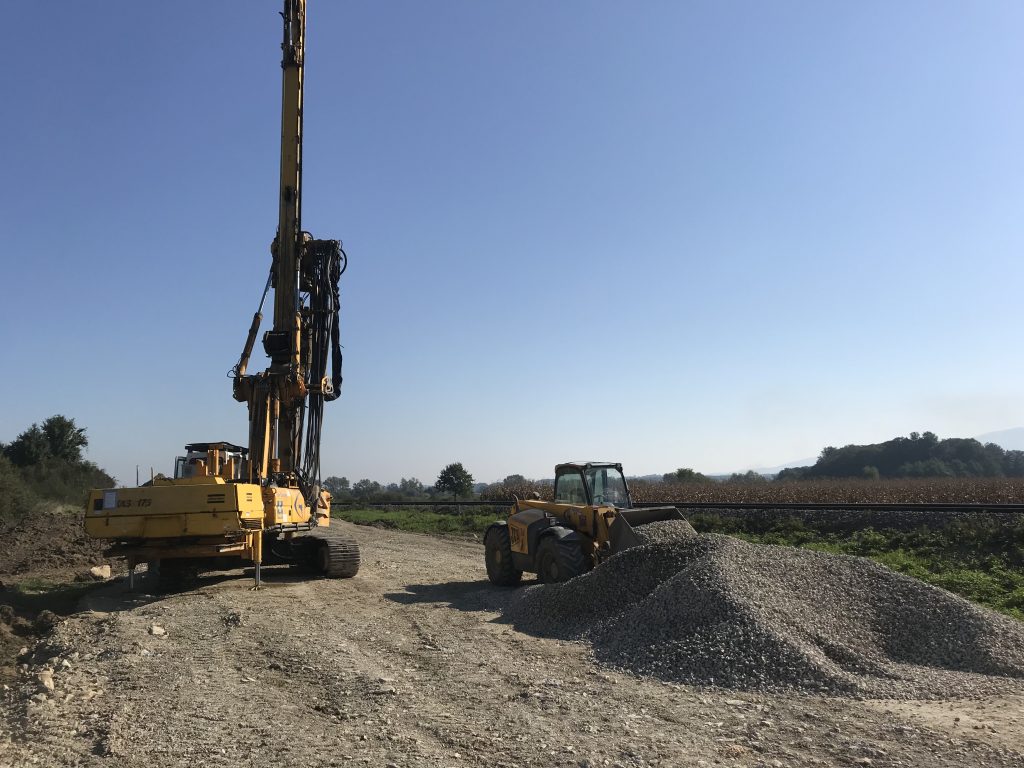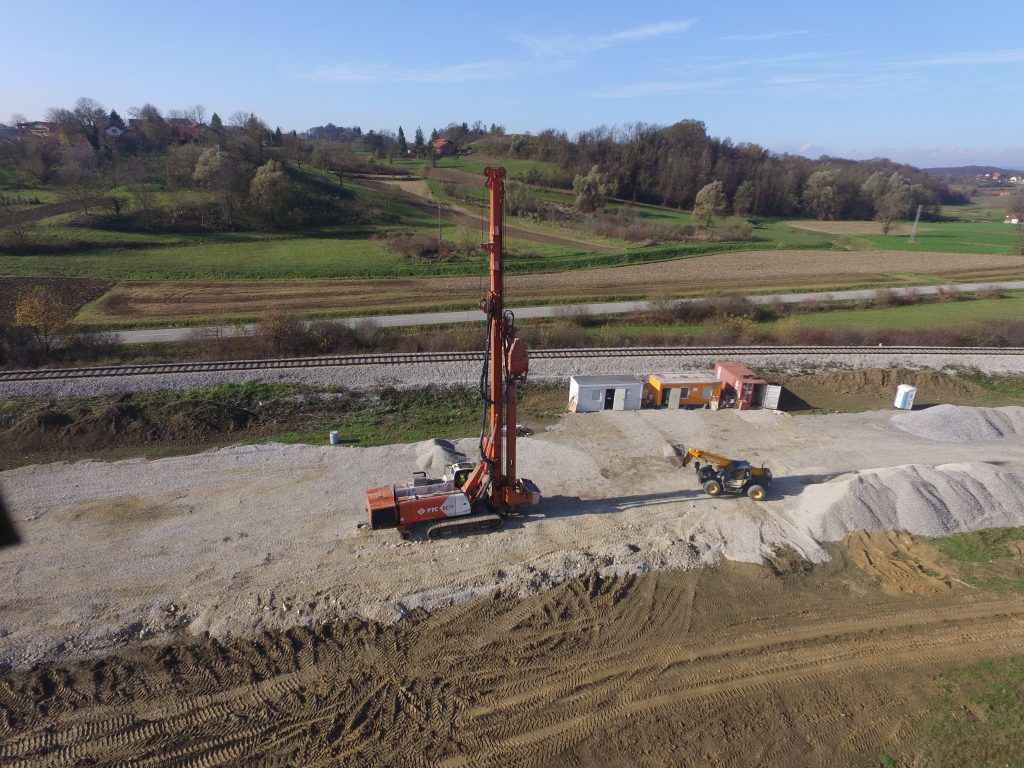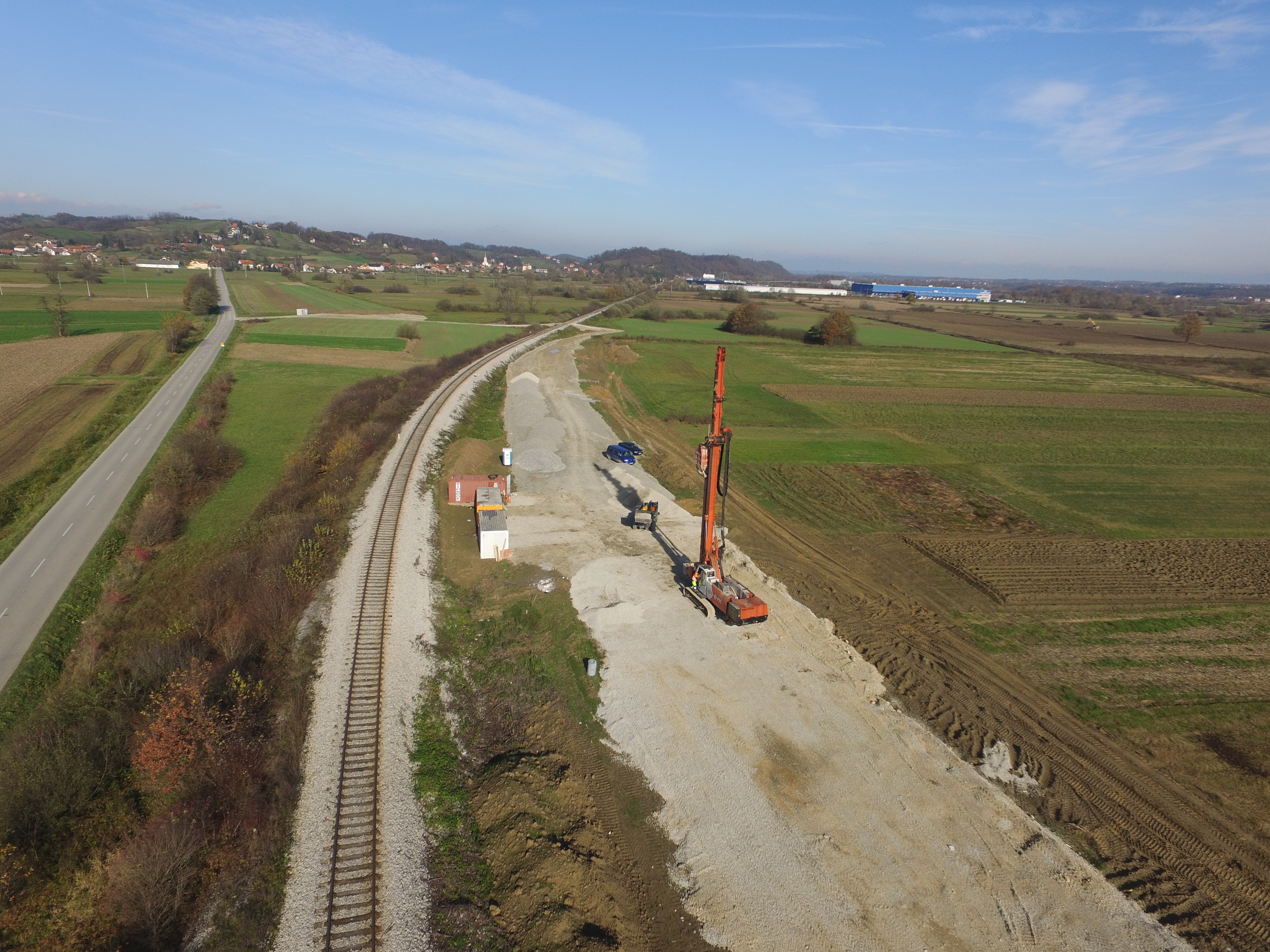Foundation soil improvement of the Zaprešić – Zabok railway line R201
The company Geotech Ltd. is a part of the project that includes modernization of the Zaprešić-Zabok railway line R201. This is a section of the Zagorje line, leading to Čakovec with a regional character (R201 Zaprešić – Bedekovčina – Čakovec) and plays an important role in passenger transport in the area of Zagreb agglomeration. For the project, which eligible project costs have been estimated at HRK 614.4 million, 85 per cent financing will be secured under the Cohesion fund by means of the Operational Programme Competitiveness and Cohesion 2014.- 2020.
Modernization of the railway line R201, Section Zaprešić-Zabok
The section stretches across two counties, Zagreb and Krapina-Zagorje, and the project encompasses the following interventions on the 23.85 km long section:
- Construction line parameters will improve the design construction speed up to 120 km/h maximum. Some line curves will be reconstructed, i.e. the existing train path will be moved to 6 km of line in total, which will reduce journey times of passenger trains.
- The line will be electrified.
- The stations Novi Dvori, Luka, Veliko Trgovišće and Zabok.
- At Pojatno, Kupljenovo and Žeinci stops, new platforms, canopies and parking spaces will be built.
- At stations and stops, a video surveillance system and audio notification for passengers will be secured.
- New signalling and interlocking, and telecommunication devices, as well as traffic remote control devices will be installed on the section in order to secure preconditions for faster, but also safer train operations.
- 15 level crossings will be modernized by modern automatic protection and synthetic flooring, four crossings will be redirected to neighbouring crossings by a connecting road, one will be cancelled.
- Completely new track structures will be built or reconstructed, such as four new reinforced concrete bridges Vučerna, Lužki potok, Črnec and Horvacka, and Horvacka road bridge. For drainage purposes 35 culverts will be set up and canals, and abutments/supporting walls where necessary.
A grant agreement to secure funds for financing of eligible costs was signed on November 9, 2017 by the Ministry of the Sea, Transport and Infrastructure, HŽ Infrastruktura and the Central Finance and Contracting Agency (CFCA). The time of project implementation is until the end of 2021.
On 12 June 2018 the company SWIETELSKY Ltd. and HŽ Infrastructure haves signed the contract for works on the project of modernization and electrification on the Zaprešić – Zabok railway line section worth HRK 530,655,163.07.
Detailed design of foundation soil improvement of the Zaprešić – Zabok railway line
The company GEOTECH Ltd., as a subcontractor of the main design company Railway Project Company dd, made a detailed design of foundation soil improvement on deviation (8 km + 389.2-10 + 163.75), 2 (km 11 + 224.77 to 12 + 023,45) and 3 (km 13 + 420.85-14 +572.03) of the future modernized Zaprešić – Zabok railway line.
Track section Zaprešić – Zabok is divided into sub-sections:
- I. subsection Zaprešić 0 + 000 (excluding) – Novi Dvori 4 + 213 (including)
- II. subsection Novi Dvori 4+213 (excluding) – Luka 12+904 (including)
- III. subsection, Luka (excluding) 12+904 – Veliko Trgovišće 18+420 (including)
- IV. subsection, Veliko Trgovišće 18+420 (excluding) – Zabok 23+858 (including)

Photo 1. An overview of the railway line
Description of foundation soil improvement
The foundation soil improvement includes the execution of stone columns D = 800.0 mm in diameter, depth L = 4.0, 5.0, 6.0 and 7.0 m at a spacing 2.25 x 2.25 m.

Photo 2. Typical cross-section
Stone columns are installed by the deep-vibro replacement method, whereby the material is squeezed into softer soil creating new base permeable volumes in pile form. The construction material for stone columns is gravel or stone crushed with granules of 16/32 mm.
This method directly improves the soil which, by compacting energy and by inserting the material of the gravel, cuts, strengthens, hardens and makes it more permeable.
The function of stone columns is primarily to accelerate the consolidation of cohesive soil. The columns operate as vertical drains.
The execution time is short, and the procedure is extremely adaptable to field conditions.

Photo 3. Stone columns execution

Photo 4. Stone columns execution
